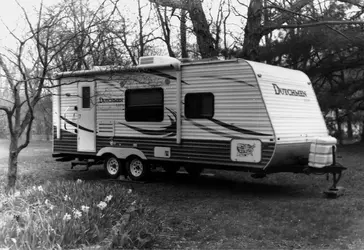Grandpa Ron
Been spending a lot of time on here!
- Joined
- Aug 9, 2018
- Messages
- 1,217
- Reaction score
- 754
- Can others edit my Photos
- Photos OK to edit
- Thread Starter 🔹
- #16
So far I have only had a bright but overcast day to shoot, no distinct shadows. The light meter indicated f22 at 1/10 sec. so,
Tomorrow is Pinhole camera day 4/26/20 so I will shoot a couple of more sheets, that will give me enough film to mix up a batch developer.
Rodinal has been around for a long time, so my intuition tells me that the problem is with my lens exposure and/or the light meter, rather than the published development times.
I will post my result when I am finished. Thanks again for the suggestions.
- I shot two sheets at that f22 for 1/10 sec. I will use these to test the developer time. I will do one at the recommended development time and one a 1 1/2 the recommended time.
- I also shot one sheet at f16 for 1/10 sec. or one stop over.
- I took one shot at f16 or 1 stop over the meter reading.
- and one shot at f 11 or two stops over.
Tomorrow is Pinhole camera day 4/26/20 so I will shoot a couple of more sheets, that will give me enough film to mix up a batch developer.
Rodinal has been around for a long time, so my intuition tells me that the problem is with my lens exposure and/or the light meter, rather than the published development times.
I will post my result when I am finished. Thanks again for the suggestions.










![[No title]](/data/xfmg/thumbnail/31/31050-824a861ee359cd274a794fc7b9ff8f7b.jpg?1734159158)
